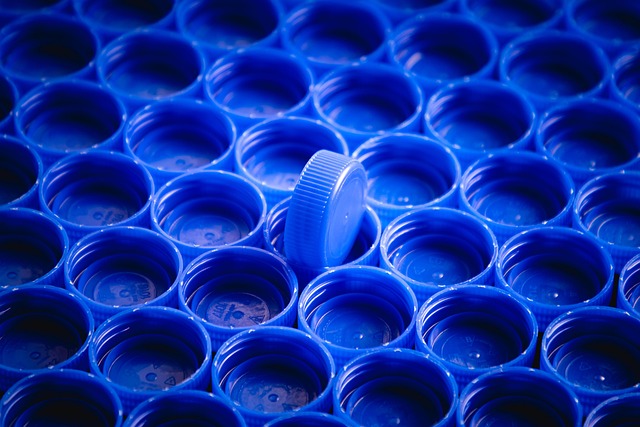Introduction: Glycosaminoglycans - The Body's Connective Tissue Essentials
Glycosaminoglycans (GAGs) are vital complex carbohydrates, essential for the strength and function of our connective tissues. Think of them as the crucial 'hydrators' and 'shock absorbers' within the structural framework (extracellular matrix) of cartilage, bone, skin, and blood vessels. These long, unbranched polysaccharide chains, characterized by repeating disaccharide units and heavy sulfation (giving them a strong negative charge), help tissues resist compression, guide cell behavior, and maintain hydration. When the body's processes for building, breaking down, or structuring GAGs falter due to inherited genetic mutations, debilitating connective tissue disorders can arise.
The Cellular Recycling Program: Glycosaminoglycan Degradation

GAG degradation is a precise cellular recycling program occurring primarily within lysosomes, the cell's recycling centers. A specific sequence of lysosomal enzymes meticulously breaks down GAG chains into smaller components for reuse or disposal. Key players in this process include hyaluronidases, sulfatases, and hexosaminidases, each specialized for particular bonds or chemical groups. If any enzyme in this cascade is defective or missing due to a genetic error, undegraded or partially degraded GAGs accumulate within lysosomes. This buildup disrupts normal cell function, leading to progressive tissue damage. This constant turnover and degradation is vital to maintain tissue health and prevent harmful accumulation.
# Conceptual Python example illustrating enzyme specificity
# Note: This is a highly simplified model for illustrative purposes.
class GAG:
def __init__(self, gag_type):
self.type = gag_type
self.degraded = False
class LysosomalEnzyme:
def __init__(self, name, target_gag):
self.name = name
self.target_gag = target_gag
def degrade_gag(gag_substrate, enzyme):
"""Simulates specific enzyme activity on a GAG substrate."""
print(f"Attempting degradation of {gag_substrate.type} with {enzyme.name}...")
if gag_substrate.type == enzyme.target_gag and not gag_substrate.degraded:
print(f"{enzyme.name} successfully targets {gag_substrate.type}. Degrading...")
gag_substrate.degraded = True
return f"Degraded {gag_substrate.type} fragments"
elif gag_substrate.degraded:
print(f"{gag_substrate.type} already degraded.")
return f"Degraded {gag_substrate.type} fragments"
else:
print(f"{enzyme.name} cannot degrade {gag_substrate.type}.")
return gag_substrate
# Example Usage
hyaluronan = GAG("Hyaluronan")
hyaluronidase = LysosomalEnzyme("Hyaluronidase", "Hyaluronan")
sulfatase = LysosomalEnzyme("Sulfatase", "Heparan Sulfate")
result1 = degrade_gag(hyaluronan, hyaluronidase)
result2 = degrade_gag(hyaluronan, sulfatase)
Heritable Connective Tissue Disorders: When GAG Recycling Fails
Several severe heritable disorders stem directly from malfunctions in the GAG degradation pathway. The Mucopolysaccharidoses (MPS) are a prominent group of such lysosomal storage disorders. They are caused by inherited deficiencies in specific enzymes needed for GAG breakdown. Each MPS type (e.g., MPS I, II, III, IV, VI, VII) results from a different faulty enzyme, causing the accumulation of particular GAGs like heparan sulfate, dermatan sulfate, or keratan sulfate. This toxic buildup leads to progressive, multi-systemic damage, manifesting as skeletal deformities (joint stiffness, short stature), enlarged organs (organomegaly), distinctive facial features, cognitive impairment (in some types), and cardiovascular problems. Pinpointing the specific accumulating GAGs and deficient enzyme is critical for accurate diagnosis and guiding potential therapies.
Diagnosing the Problem: Identifying GAG Degradation Defects
Diagnosing these disorders requires a multi-pronged approach combining clinical observation with laboratory tests. Biochemical tests are key: Urine GAG analysis can reveal abnormally high levels of specific GAGs (the undegraded 'waste products'), providing initial clues. Definitive diagnosis often relies on enzyme assays, which directly measure the activity of suspected deficient lysosomal enzymes in patient samples (like blood spots, white blood cells, or skin fibroblasts) – assessing the 'recycling machinery's' efficiency. Finally, genetic testing analyzes the genes encoding these enzymes to identify the specific mutations responsible (the 'blueprint error'), confirming the diagnosis, enabling carrier detection in families, and facilitating prenatal diagnosis.
- Clinical evaluation (symptoms, family history)
- Urine GAG analysis (screening for excess GAGs)
- Lysosomal enzyme assays (measuring specific enzyme activity)
- Genetic testing (identifying causative gene mutations)
Treatment Strategies: Current Approaches and Future Horizons
Currently, management focuses on alleviating symptoms and slowing disease progression. Enzyme replacement therapy (ERT) is a mainstay for several MPS types, involving regular intravenous infusions of the missing enzyme to help break down accumulated GAGs. However, ERT has limitations, particularly in reaching the brain and cartilage effectively. Hematopoietic stem cell transplantation (HSCT) offers a potential cure for select MPS types (especially MPS I if performed early), by providing a long-term source of healthy cells that produce the correct enzyme. Exciting research focuses on gene therapy, aiming to deliver a correct copy of the faulty gene. Other emerging strategies include substrate reduction therapy (SRT), which aims to decrease the production of GAGs, and chaperone therapy, designed to help stabilize partially functional mutant enzymes.
Further Information and Support Resources
- National MPS Society: Information and support for families affected by MPS and related diseases.
- National Organization for Rare Disorders (NORD): Comprehensive resource for rare diseases, including HCTDs.